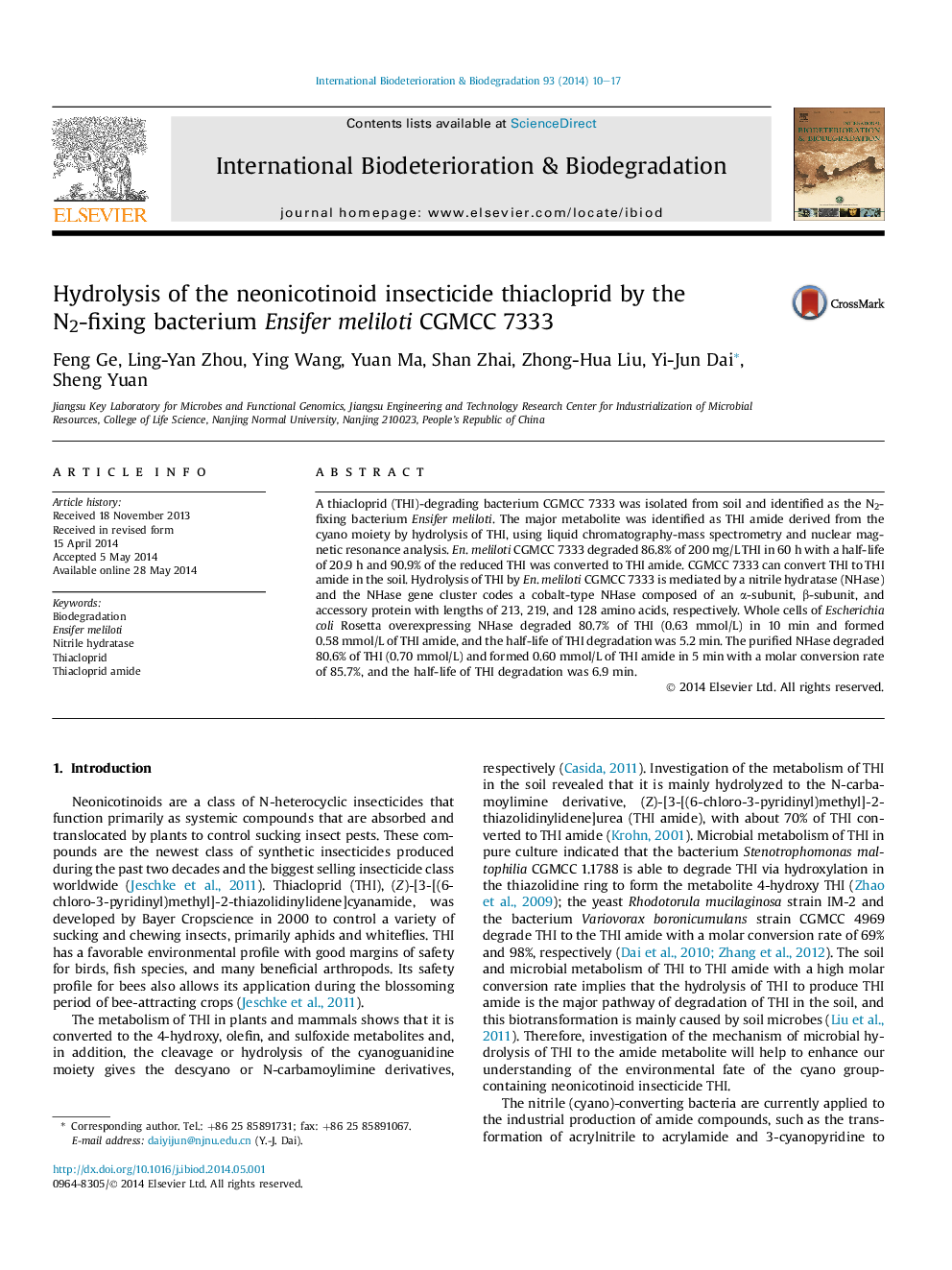| Article ID | Journal | Published Year | Pages | File Type |
|---|---|---|---|---|
| 4364701 | International Biodeterioration & Biodegradation | 2014 | 8 Pages |
•A N2-fixing Ensifer meliloti CGMCC 7333 degrades the neonicotinoid thiacloprid.•En. meliloti CGMCC 7333 shows the most rapid thiacloprid degradation.•En. meliloti CGMCC 7333 Hydrolyzes thiacloprid to its amide metabolite.•A nitrile hydratase mediates the hydrolysis of thiacloprid.
A thiacloprid (THI)-degrading bacterium CGMCC 7333 was isolated from soil and identified as the N2-fixing bacterium Ensifer meliloti. The major metabolite was identified as THI amide derived from the cyano moiety by hydrolysis of THI, using liquid chromatography-mass spectrometry and nuclear magnetic resonance analysis. En. meliloti CGMCC 7333 degraded 86.8% of 200 mg/L THI in 60 h with a half-life of 20.9 h and 90.9% of the reduced THI was converted to THI amide. CGMCC 7333 can convert THI to THI amide in the soil. Hydrolysis of THI by En. meliloti CGMCC 7333 is mediated by a nitrile hydratase (NHase) and the NHase gene cluster codes a cobalt-type NHase composed of an α-subunit, β-subunit, and accessory protein with lengths of 213, 219, and 128 amino acids, respectively. Whole cells of Escherichia coli Rosetta overexpressing NHase degraded 80.7% of THI (0.63 mmol/L) in 10 min and formed 0.58 mmol/L of THI amide, and the half-life of THI degradation was 5.2 min. The purified NHase degraded 80.6% of THI (0.70 mmol/L) and formed 0.60 mmol/L of THI amide in 5 min with a molar conversion rate of 85.7%, and the half-life of THI degradation was 6.9 min.
